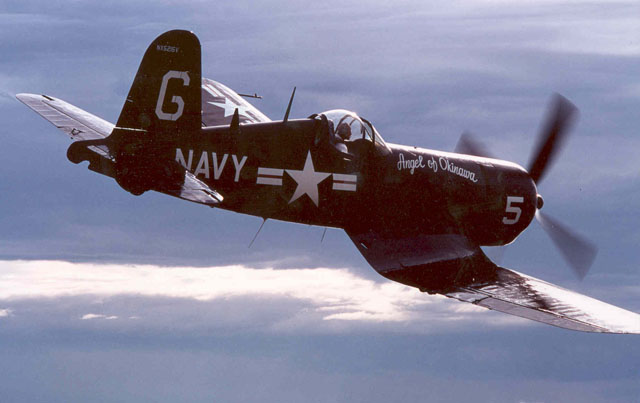
1945 Chance-Vought F4U-4 Corsair
The Chance Vought Corsair was the first fighter to exceed 400 mph and served on both land and sea as a fighter and a bomber.
It helped turn the tide against the Japanese Zero and gave American pilots an advantage in the critical air battles of the South Pacific.
The Corsair’s most recognizable feature is its inverted gull wing. This gave good ground clearance for its huge 13-foot, 2-inch propeller and allowed its short landing gear to retract rearwards into the wing. While the Corsair was originally designed to be a carrier-based aircraft, it was some time before it became carrier qualified. It was a handful for a novice pilot as its long nose gave poor visibility on carrier approaches. Its large propeller caused tremendous torque at slow speeds, and it had a nasty habit of dropping the left wing at stalling speeds. This was solved by a 6-inch “stall” strip, visible on the right wing leading edge that allowed both wings to stall at the same time.
The Corsair was made famous with pilots like Major Greg “Pappy” Boyington, who commanded the legendary Black Sheep Squadron. Corsairs went on to fight in Korea and were used by the Air Force of Honduras as late as the 1970s.
Specifications
- Year Built — 1945
- Wingspan — 41′
- Cruise Speed — 300 mph
- Top Speed — 446 mph
- Gross Weight — 14,533 lbs
- Engine — Pratt & Whitney R-2800 (2,450 hp)
- Armament — Six .50 caliber machine guns, Three 1000 lb bombs, Eight 5-inch rockets
Kermit’s Comments
The wings on a Corsair are designed to fold to save space for maximum storage on an aircraft carrier. You may be surprised to know that the ailerons on this World War II fighter are completely made of wood and the outboard wing panels are covered with fabric.